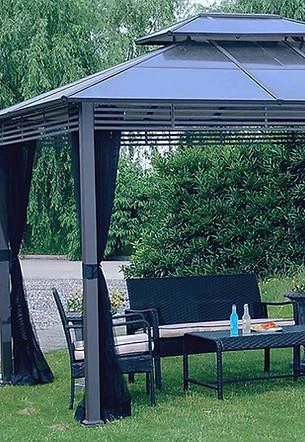The Ultimate Guide to Pergola Installations
Transforming your backyard into a stylish and functional outdoor living space often starts with pergola installations. A pergola not only provides shade and shelter but also adds aesthetic appeal to your garden, creating a perfect spot for relaxation and entertainment.
What is a Pergola?
A pergola is an outdoor structure consisting of columns that support a roofing grid of beams and rafters. This framework can be left open or covered to create a more defined shelter. Pergolas are versatile structures that can be freestanding or attached to your house, offering numerous design possibilities to enhance your outdoor space.
Benefits of Pergola Installations
-
Enhances Outdoor Living Space: Pergolas extend your living area, providing a seamless transition from indoor to outdoor spaces. They create a perfect spot for dining, lounging, or hosting gatherings.
-
Increases Property Value: Well-designed pergola installations can significantly boost your property’s market value by adding a touch of elegance and functionality to your garden.
-
Provides Shade and Comfort: While pergolas may not completely block the sun, they offer partial shade and can be outfitted with climbing plants, retractable canopies, or shade sails to increase comfort.
-
Customization and Flexibility: Pergolas come in various materials, such as wood, vinyl, aluminum, and fiberglass. They can be customized to fit your style and budget, making them a versatile addition to any landscape.
Key Considerations for Pergola Installations
-
Location: Choose a location that complements your home’s architecture and maximizes the use of your outdoor space. Ensure the site is level and has good drainage to avoid future issues.
-
Size and Scale: The pergola should be proportionate to your yard. Consider the intended use and how much space you need for furniture, plants, and other features.
-
Materials: Select materials that match your aesthetic preferences and climate conditions. Wood offers a classic look, while metal options provide durability with minimal maintenance.
-
Design and Style: Pergolas come in various designs, from traditional to modern. Decide on the style that best fits your home’s design and your personal taste.
The Pergola Install Process
-
Planning and Design: Begin with a detailed plan, including dimensions, materials, and design features. Consulting with a professional can help ensure your vision is feasible and aligns with local building codes.
-
Foundation: A sturdy foundation is crucial. Whether using concrete footings or deck mounts, make sure the pergola is securely anchored.
-
Construction: Follow the design plan, starting with the installation of the columns and then adding the beams and rafters. Precision and accuracy during this phase ensure the structure’s stability and longevity.
-
Finishing Touches: Once the pergola install is complete, add finishing touches like paint, stain, or sealant to protect against the elements. Enhance the space with plants, lighting, and outdoor furniture to create a welcoming environment.
Conclusion
Investing in pergola installations is a fantastic way to enrich your outdoor living experience. With thoughtful planning and execution, a pergola can become a beautiful and functional centerpiece in your garden, providing enjoyment for years to come.


Comments
Post a Comment